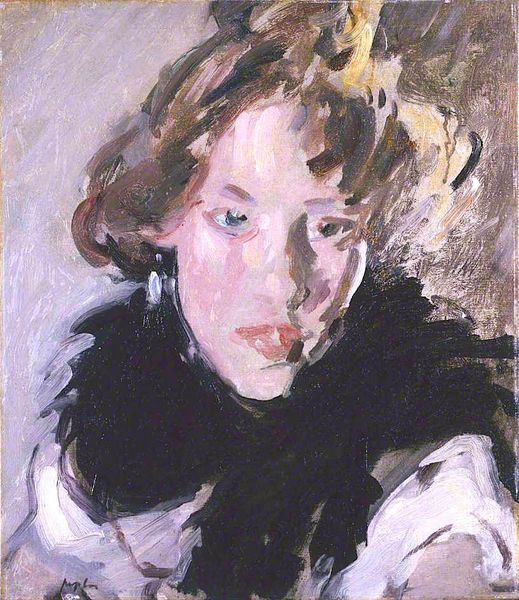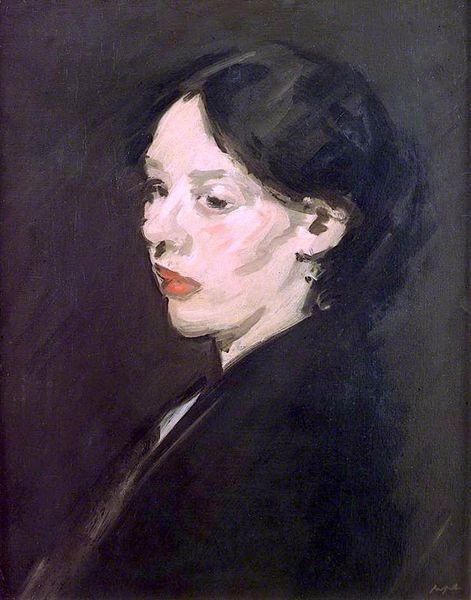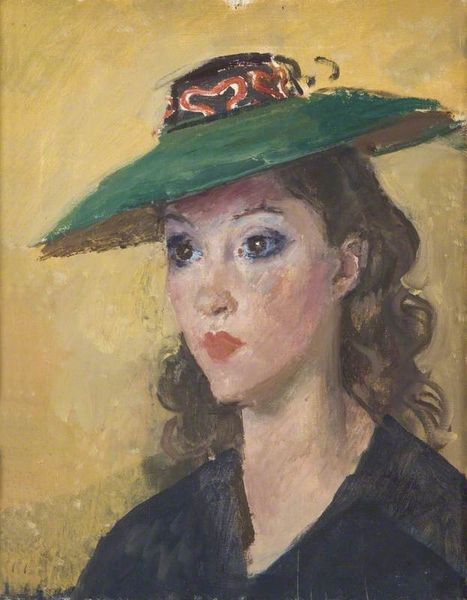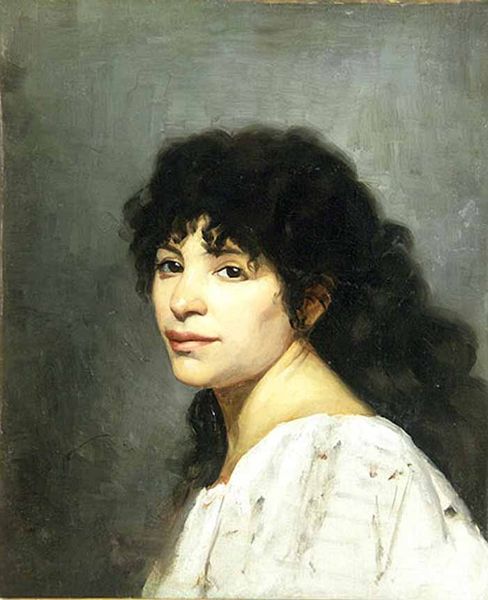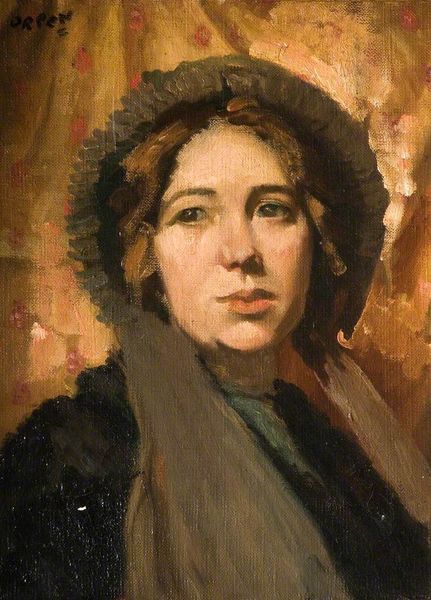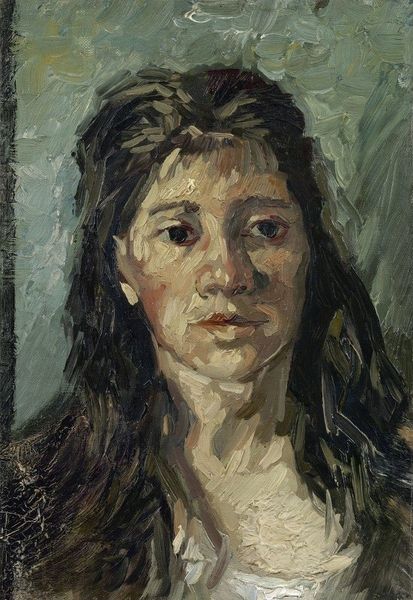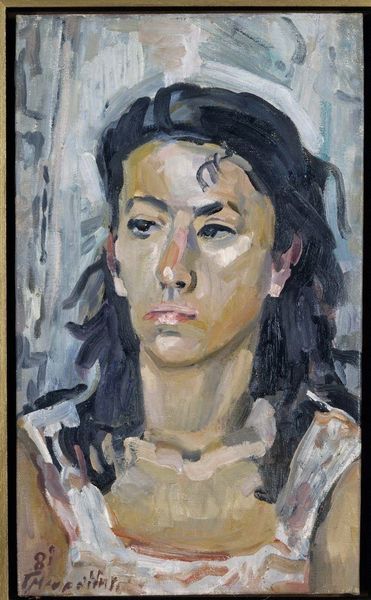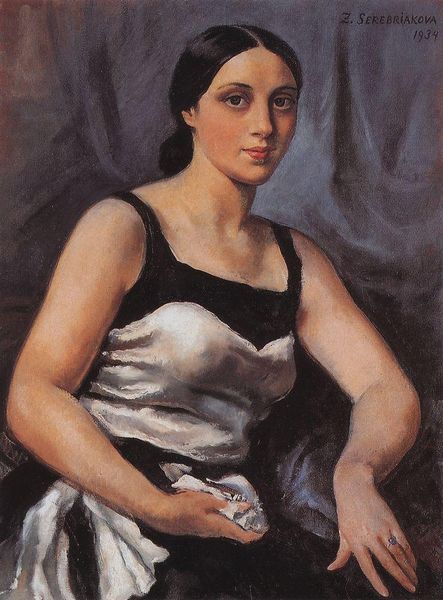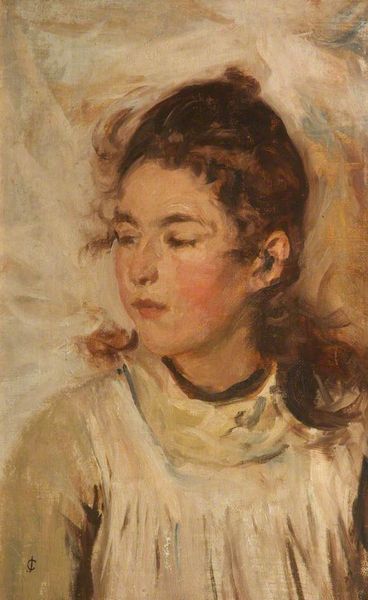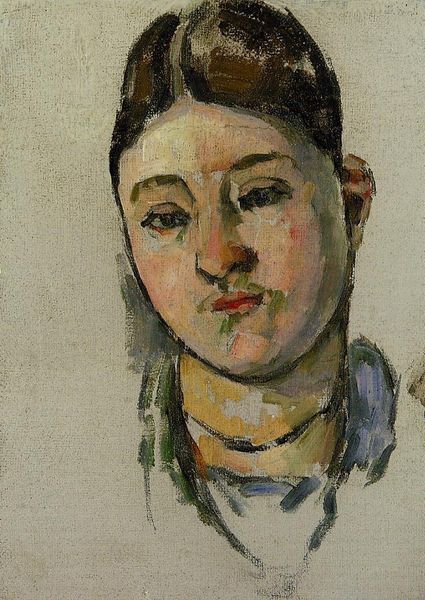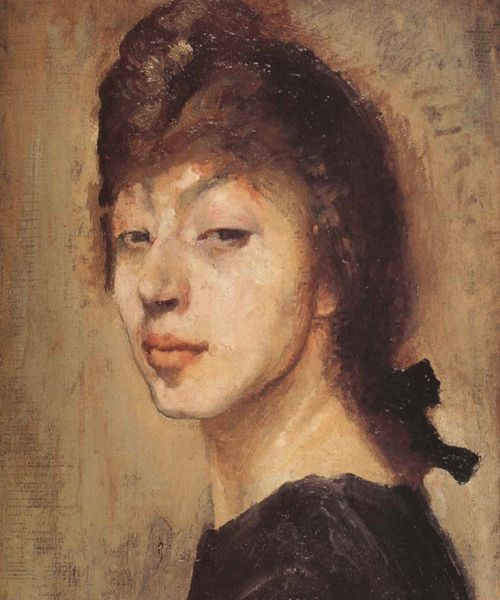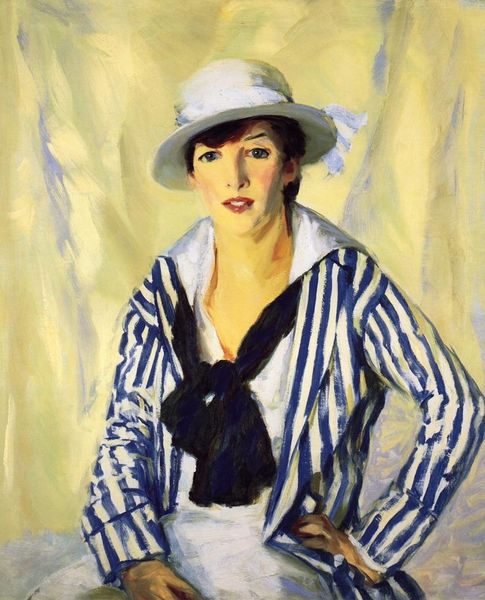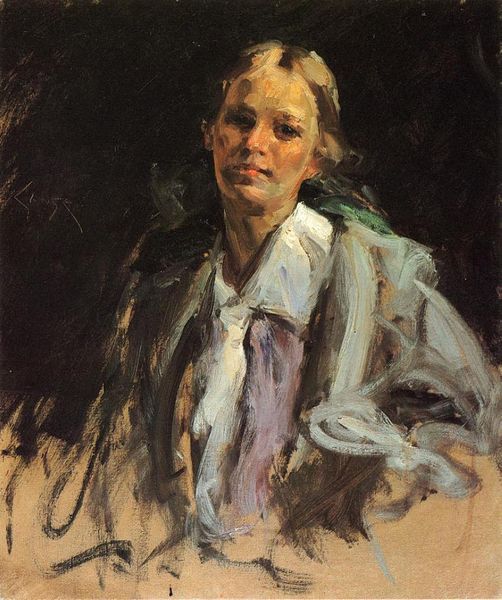
Copyright: Public domain
Curator: Standing before us, we have Samuel Peploe's "Jeannie Blyth," painted in 1905. It's an oil on canvas, a portrait, exhibiting qualities that verge into Impressionism. Editor: It has a somewhat melancholic quality, wouldn't you agree? The limited palette, almost monochromatic in shades of blues and greens, with just a touch of blush on the sitter's cheeks… it makes me think about how the societal roles placed on women at the time could feel restricting. Curator: That's interesting. I tend to see it as more of an exploration of form and light. Peploe was a key figure in the Scottish Colourists movement, and his work often shows a concern with the arrangement of shapes and the play of light. The loose brushstrokes, the way the figure blends into the background, hints at the Impressionist influence that was shaping modern art at the time. Editor: I agree about the artistic exploration of form, but can we truly separate that exploration from its cultural context? The intimate setting, the almost shy gaze of the woman... It feels like a statement, perhaps subtle, on the internal lives of women, confined within the domestic sphere and under male gaze. Peploe, in his own way, acknowledges that in a way by emphasizing intimacy in the pose. Curator: Possibly. Though, during this period, there was a rising movement among female artists and sitters toward representing women as self-possessed and confident. Consider the New Woman archetype. Was Jeannie Blyth necessarily confined, or could this also be a depiction of quiet, yet assertive, strength? I would contend it is open to various interpretations. Editor: I'd counter that power does not need to show in a defiant face only. Here the soft gaze reflects on interior strength. In an Edwardian society riddled with toxic expectations toward women this piece could be regarded as a silent claim of power and resilience in quiet modesty. That to me reflects a very subversive perspective that needs to be taken into account here. Curator: I'm not sure I fully embrace that interpretation, but it does highlight how art can hold diverse meanings. Editor: Exactly. Ultimately, it's the conversation we have *with* the art that truly matters. Curator: Indeed, the conversation – and understanding the historical currents that informed its creation, allowing us to see "Jeannie Blyth" with fresh eyes.
Comments
No comments
Be the first to comment and join the conversation on the ultimate creative platform.
